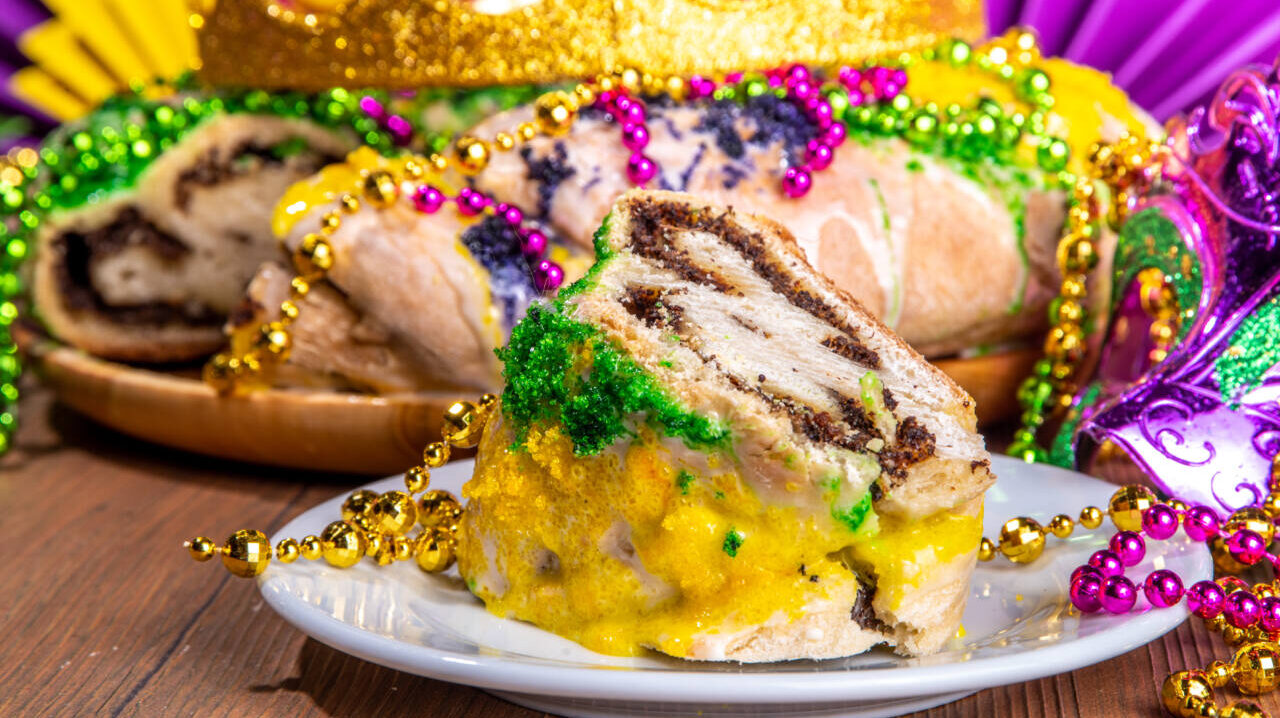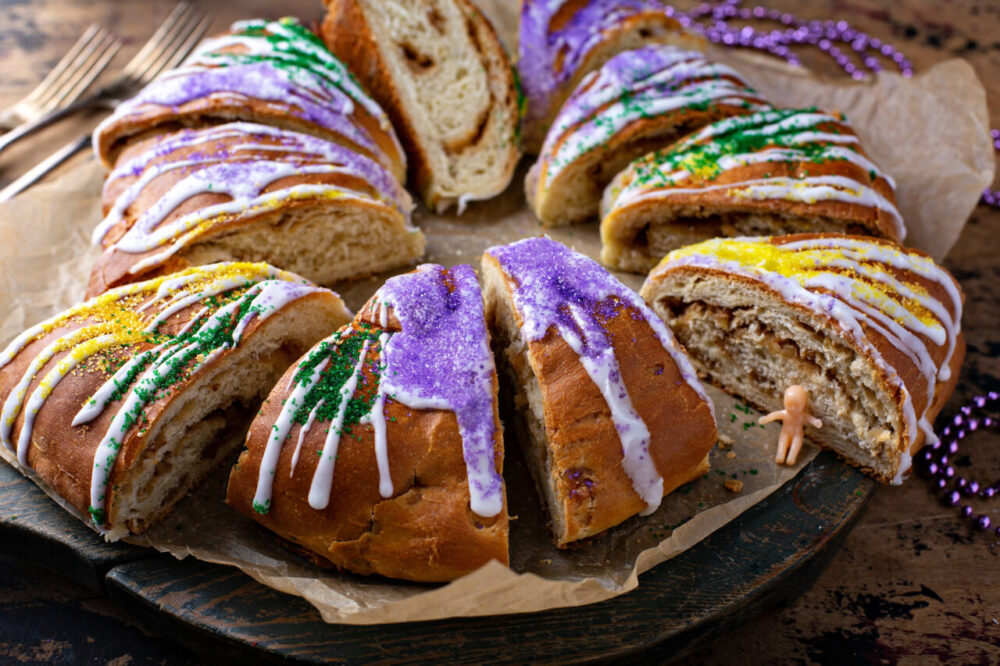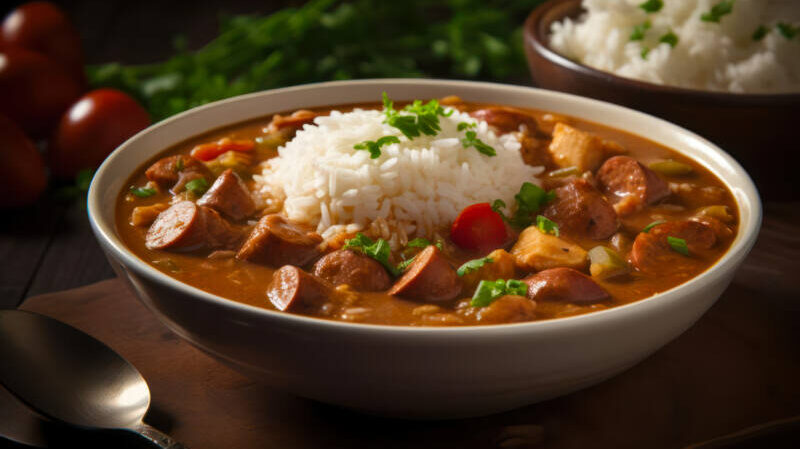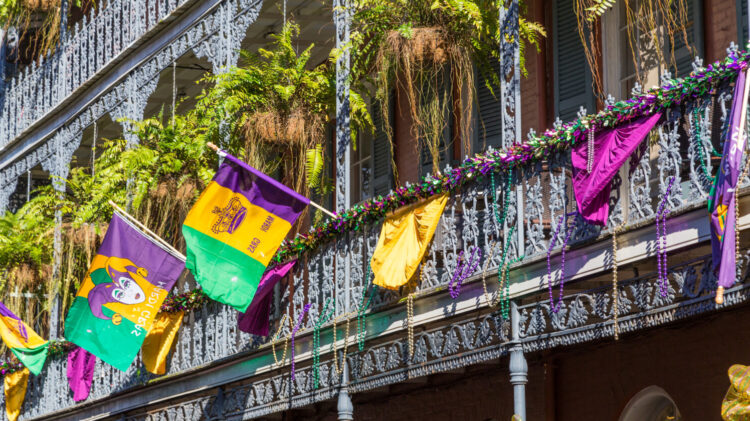This is the interesting backstory behind Fat Tuesday’s king cake

When you think of Mardi Gras, you likely envision colorful beads, elaborate masks, riotous parades and general revelry. But how much do you know about the traditional foods of Mardi Gras — specifically, the king cake? Whether you’re making your own or picking up a store-bought king cake from your favorite bakery, you’re participating in a tradition that goes back hundreds of years when you serve this round, bread-like cake on Fat Tuesday.
The History Of Mardi Gras
Mardi Gras — the French phrase for Fat Tuesday — is the day before Ash Wednesday, a day in which Catholics and other Christians are meant to have one last day of revelry before fasting for Lent. Fat Tuesday also marks the last day of what is considered to be Mardi Gras season. The season is filled with Carnival celebrations that last from the Epiphany all the way through to Ash Wednesday.
MORE: Mardi Gras decorations for your Fat Tuesday party
Though it’s rooted in medieval history, Mardi Gras is still celebrated all over the world by people of all different cultures and faiths, although it may go by different names. For instance, in the United Kingdom and Ireland, the celebration is marked over three days, called Shrovetide, and it ends on Shrove Tuesday. (The word “shrove” is derived from the verb “to shrive,” or to hear confessions, as this is a time when Catholics confess their sins.)
In addition to parades and other forms of celebration, people who celebrate Mardi Gras also enjoy rich and delicious foods. And here in America — particularly in New Orleans — the most traditional Mardi Gras food is king cake.
What Is King Cake?
The king cake originated in Europe, where people in France and Spain would shape cakes into a circle to mimic a king’s crown in the Middle Ages. The king cake tradition arrived in New Orleans from France in the 1800s.
Although it’s called a cake, the sweet treat is really more of a cross between a pastry and a coffee cake. King cakes are made of brioche dough and have fillings such as chocolate, cream cheese or cinnamon. However, as Love NOLA TV explains, modern chefs are getting creative with fillings for king cakes, making fruit-filled and savory versions, as well as baking up cupcakes and monkey breads inspired by the original.
The cakes comes in the three colors of Mardi Gras — purple, green and gold — and each of these colors represents a different virtue: purple for justice, green for faith and gold for power. Beyond these traditional colors, hidden inside each cake is a plastic baby. That’s right: a baby.
The baby is meant to represent the baby Jesus. However, the tradition of the hidden cake baby actually has pagan roots. Early Romans who celebrated Saturnalia, a winter solstice celebration in honor of the god Saturn, believed fava beans had magical properties. These fava beans were highly prized among the Romans, and they even used them for voting purposes. During Saturnalia, a fava bean would be baked inside of a galette (a flat, round pastry), and whoever received the piece with the bean would be “king” for the day.
The same is true for the person who receives the baby in the king cake — except that person who finds the cake baby is also responsible for providing the king cake on the next Mardi Gras.
Ready to try baking your own? New Orleans Tourism shared a recipe from NOLA’s Gracious Bakery. Just don’t forget to add the king cake babies.
Happy Fat Tuesday!






